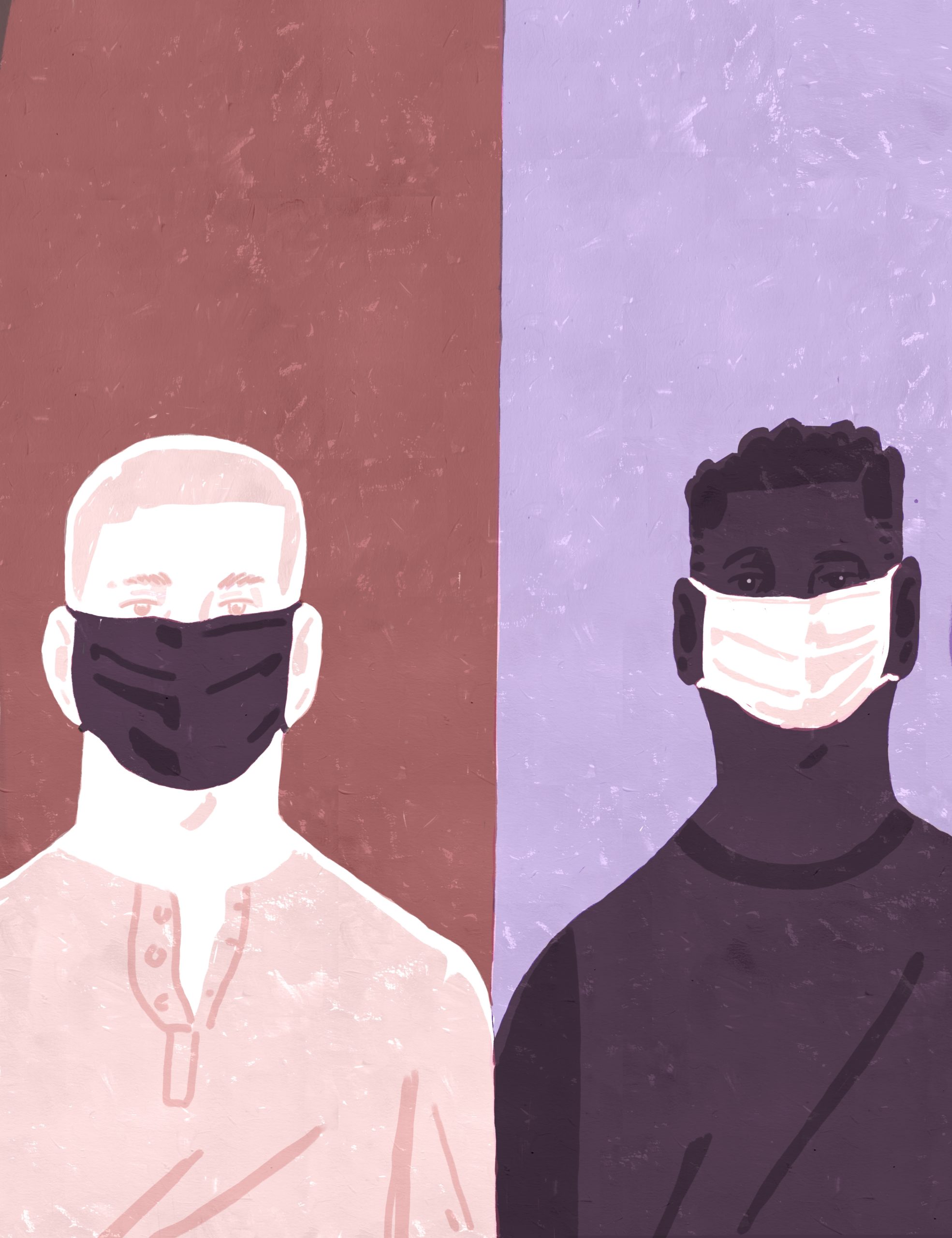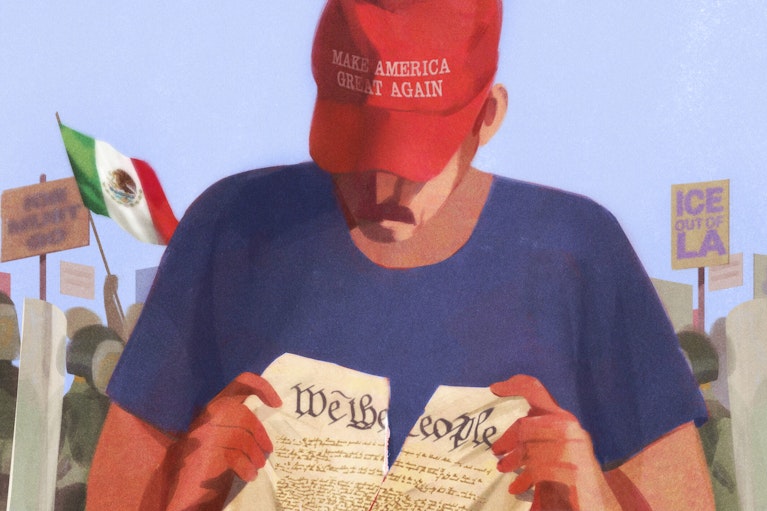Once collected and analyzed, the numbers of COVID-19 deaths, which the U.S. Centers for Disease Control and Prevention agreed to report by race and ethnicity only reluctantly, unveil a stark reality. Nationally, African-American deaths are nearly two times greater than their share of the population. In New York City, the death rate is twice that of whites. Hispanic data, where it exists, show similarly disproportionate illness. Native Americans fare still worse.
This disproportionate devastation of communities of color caught the nation by surprise. But it shouldn’t have. We should have been more vigilant.
Instead, many of our leaders overlooked the realities of life for people of color. U.S. Surgeon General Jerome Adams, who is African American, was widely criticized for his finger-pointing remarks. He scolded people of color, telling them to stay at home and to renounce drugs, tobacco and alcohol, as if flouting social-distancing measures and substance abuse were responsible for their higher COVID-19 death rates. Adams should have known that people of color are the least likely to have the option to work from home or social distance. Between 20 to 25% of blacks and latinos have to take public transit — forced into proximity with others — to a job where they’re again interfacing with others. Their higher rates are driven by economic circumstances, not substance abuse.
“The surgeon general should have known that people of color are the least likely to have the option to work from home or social distance.”
Adequate protective gear has been scarce for the disproportionately ethnic workers who operate and clean mass transit and who work in factories, hospitals, nursing homes and restaurants. Moreover, wearing masks has proved sometimes hazardous for African-American men, who have been ejected from stores by security and police officers who interpret the masks as potential criminal gear — that is, when police officers aren’t preferentially assaulting them for not wearing masks in public.
Furthermore, African Americans are less likely than whites to have a personal physician or health insurance and so must rely upon emergency departments that are not designed to render consistent and preventative care. On top of this, hospital closings in many neighborhoods of color have escalated.
Environmental Racism Goes Viral
Much of the heightened racial susceptibility to the coronavirus can be explained by environmental racism and the disproportionate exposure to air pollution, poisonous heavy metals, industrial chemicals, pathogens and “food swamps” in segregated, environmentally hazardous sacrifice zones.
Diseases like asthma and chronic obstructive pulmonary disease are partially caused by benzene, pesticides, PCBs and other carcinogens in air pollution. University of Minnesota researchers determined that people of color breathe 38% more polluted air than whites. Cockroaches and dust mites also trigger asthma.
Polluted air raises rates of coronavirus risk factors like heart disease and kidney disease, which is exacerbated in minority communities by racially disproportionate exposure to nephrotoxins, or kidney poisons, at home, at work and in the air.
Living where affordable nutritious fare is scarce, and fat and sugar are unavoidable, raises the risk of diabetes, another coronavirus risk factor. Exposure to carcinogenic industrial byproducts — such as arsenic, benzene, radon and trichloroethylene — escalates African-American cancer rates, as exemplified by Louisiana’s “cancer alley.” Treating these higher cancer rates in people of color typically involves immunosuppression — another risk factor for COVID-19. Since 1980, we’ve known that lead and arsenic, to which marginalized children of color are disproportionately exposed, also weaken the immune response to bacteria and viruses.
Ethics, The First Casualty
As health workers and researchers fight the pandemic, they must also confront ethical issues. Medical consent was an early casualty. In some venues, CPR is being withheld from some patients who need it. Some hospitals considered imposing do-not-resuscitate orders without patient input or consent.
Ethical abuses also extend to research studies. Widespread outrage followed the suggestion by French doctors Camille Locht and Jean-Paul Mira that placebo trials that are deemed too unethical in the West be conducted in Africa instead. Conducting placebo trials for serious illnesses is often unethical because it means that some subjects receive no treatment at all.
“The suggestion that Africans should be used in studies deemed too risky or unethical for Westerners is not novel.”
The suggestion that Africans should be used in studies deemed too risky or unethical for Westerners is not novel. Regarding where to do placebo studies on life-threatening diseases, a 2001 publication asked: “Is the developing world the answer?” Another researcher wrote, also in 2001: “Drug companies are looking increasingly to third-world countries to conduct placebo-controlled trials and therefore raising much dissent in the medical community, with cries of ‘medical imperialism.’”
Infectious Fear: COVID Drives Xenophobia
Dramatic demonstrations now engulf the streets of America, triggered by egregious killings of African Americans by police. These street battles were preceded by widespread violence of another kind as the coronavirus gained traction in the U.S. Private citizens have invoked health concerns to justify assaults on people of color, not only for failing to observe social distancing, but also for bringing the virus to America’s shores.
We first saw this in the spate of verbal and violent attacks on people of Asian descent who were blamed for what President Trump — who not long ago decried immigration from “shithole countries” — chose to call the “Chinese virus.” Shouted slurs and threats escalated quickly to violent attacks, including a knife attack on an entire family who looked Asian.
Soon, these attacks spread to members of other ethnic groups, generating assaults on African Americans and people perceived as African as well, including the murder of Janie Marshall, a frail 86-year-old African-American woman with dementia who was killed in a Brooklyn emergency department when she staggered and grabbed another patient’s IV pole. The other patient, a 32-year-old woman, became angry that Marshall had come too close and shoved her. Marshall fell, hit her head and died three hours later.
“Some animals can detect the presence of infection in one of their own and will protect themselves by sprinting or swimming away in a version of social distancing.”
Such overreactions may be cast in the guise of public health concerns, but I fear that we could be seeing what the University of British Columbia psychology professor Mark Schaller calls “protective prejudice” — heightened xenophobia as a disease-avoidance strategy. For example, pregnant women’s xenophobia soars in their first trimester when the immune system is dampened in order to protect the fetus from rejection.
Some animals — including ants, tadpoles and Caribbean spiny lobsters — can detect the presence of infection in one of their own and will protect themselves by sprinting or swimming away in a version of social distancing. Because human immune systems don’t permit us to reliably read clues that tell us if a stranger is sick, we compensate with what Schaller dubs our “behavioral immune system.” Triggered by inaccurate clues, such as differences in skin color, speech or even diet, we tend to dramatically overreact to strangers who we suspect may be diseased.
Racist regimes recognize and exploit the fear of infection as a tool. Nazi propaganda elevated a fear of “stranger infection” against Jews and other minorities. When typhus and cholera inevitably swept through tightly packed ghettos in Warsaw and elsewhere, those who had been forced there were decried as vectors of infection. In the 1994 Rwandan genocide, the Tutsis, like Jews in the 1930s, were dehumanized as cockroaches, rats, vermin and disease vectors by those who were busily engaged in ethnic cleansing to “exterminate” them. And today, Stormfront, a racist website frequented by neo-Nazis and white supremacists, features articles proclaiming “Expel the parasite!,” arguing for the extermination of African Americans.
“Triggered by inaccurate clues, such as differences in skin color, speech or even diet, we tend to dramatically overreact to strangers who we suspect may be diseased.”
Some people are undertaking a search for a biological or genetic reason for the greater susceptibility of people of color to the coronavirus. But the ugly reality is that racism, not biological dimorphism, explains it all too well. To better handle this crisis and the next, we must devise more equitable data collection and preventative strategies.
Six months ago, most of us could not imagine that environmental racism, xenophobia and infection would mesh in such a deadly synergy. Now that it has, we must use our understanding of how each injustice exacerbates others to better protect the health of us all.





